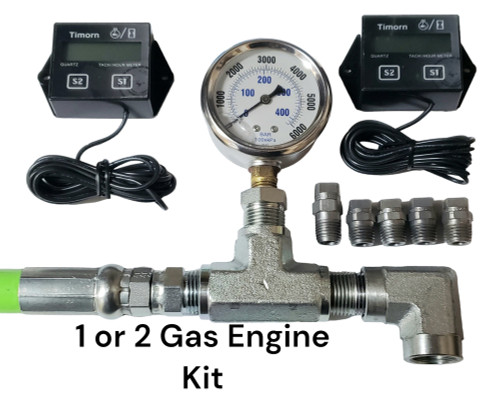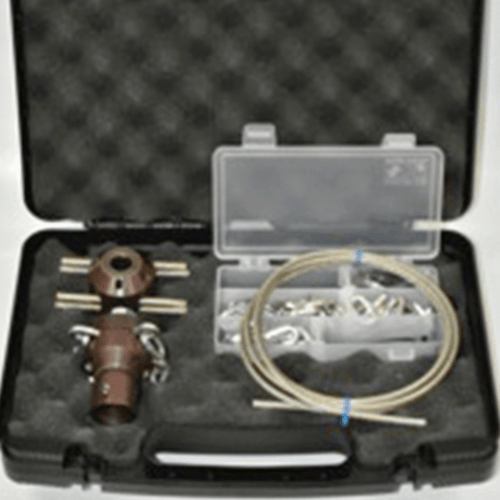Know Your Flow!
Flow Meter by Known Nozzle Size / PSI / Engine RPM (Rental Program)
The best way to know how much GPM any jetter 1-60 GPM is producing with any nozzle under full load!
Return to any UPS location within 30 days for a full refund, less shipping or keep it for future use. (We provide a return label)
Calculate the GPM of any jetter by known nozzle size, Gauge PSI and Engine RPM with this kit using the included chart. Nozzles included for 1-60 GPM Calculations.
Includes adapter for 1/4", 3/8", 1/2", 3/4", 1" hose (hose not included)
Instructions:
- Install RPM Tach on engine/s per included instructions. (You cannot get a true reading with this test kit without an engine tach.)
- Test any nozzle at full engine load RPM with no bypass going back to the tank. (Unloader turned clockwise until PSI doesn’t rise anymore or max PSI is reached) (Most gas engines should not run lower than 3200 RPM under load or engine damage may occur.)
- Record Engine RPM and Gauge PSI: Engine RPM________ Equipment Gauge PSI________
- Shut down engine, relieve any trapped pressure.
- Replace nozzle with Test Head securely clamped down and safety elbow installed, Use the chart to find and install the appropriate test nozzle matching the system-rated GPM @ 1000 PSI (i.e. #40 = 20 GPM @ 1000 PSI)
- Run system to same RPM as initial test and record Engine RPM________ Test Head Gauge PSI________
- Results: Using the #40 nozzle as an example, you should have 1000 PSI on the test head gauge for 20 GPM. Use the chart to find the closest matching GPM by comparing the test gauge PSI to the GPM / Nozzle chart column. (i.e. #40 nozzle @ 500 PSI would be 14.14 GPM)
We use 1000 PSI as the initial marker, as some systems may not have the power to reach full labeled GPM and PSI. In this case, you can still find the GPM @ engine load RPM because all systems should be able to reach at least 1000 PSI. If your system has the power, you can use the other included nozzles to test it to max output by changing the test nozzle to allow a higher PSI to be shown. (#20 nozzle @ 4000 PSI = 20 GPM @ the nozzle) Keep in mind there will be more pressure loss through the hose for higher GPM. If max PSI is reached at the pump (i.e. 4000 PSI) and max GPM is recorded with the test nozzle @1000 PSI, follow rule #3 for more nozzle performance.
Useful Rules of Water Flow Through Hose or Pipe:
- The pressure drop through a hose or pipe directly correlates to a given GPM flowing through it regardless of actual pipe or hose pressure.
- More GPM causes increased PSI loss through the same size and length of hose.
- For more GPM at the nozzle or hose exit, you have three choices: increase the hose size, increase the inlet pressure by more unit horsepower or pump GPM, or lower resistance by increasing nozzle size.
- The more water is pumped through a hose, the higher the PSI at the entrance or equipment gauge point, and the lower it is at the exit or nozzle point.
- If the GPM you are looking for is not @ the pump it will never be @ the nozzle.
- Increased GPM/PSI can be mimicked by smaller nozzle size, thereby increasing gauge pressure, but reducing GPM! Use this kit to Know Your Flow!









